Suzuki Jimny review and buyer’s guide
In a market full of big, hardcore off-road 4WD wagons and dual-cab utes, the Suzuki Jimny seems like a modern take on the old school short-wheelbase rock crawlers like Pajero, Patrol and LandCruiser. Except it has some important fundamental problems.
So you’re thinking of buying the smallest heavy-duty SUV on the market? Suzuki has a solid reputation for building rugged, relatively dependable, no-fuss off-roaders. Does the latest model live up to these standards?
This is not the safest, fastest or best-handling SUV in its class, and it’s not packed with the same high levels of technology as most rivals. But it is pretty cheap and comes powered by a simple motor, paired with simple transmissions; a five-speed manual or four-speed automatic.
Suzuki recently introduced a new five-door model called the Jimny XL. With 340mm added to the wheelbase (340mm longer overall), rear passengers get their own doors and the boot can actually store useful things, not just an umbrella or one cricket bat.
FEATURES & PRICING
There are now five different flavours of the plucky Jimny, including the bare-bones Lite three-door in manual only, the GLX three-door in manual and automatic, and the XL five-door in manual or auto. Aside from door count, they all look pretty much the same except the Lite comes with ready-to-bash 15-inch ‘steelie’ wheels while the others get 15-inch alloys.
Prices start from $30,490 for the Lite, which isn’t exactly cheap. According to VFACTS, the Jimny competes in the same compact SUV class as the Mazda CX-3. And it starts from $26,950. Obviously not the same style of vehicle and it is only front-wheel drive. But it does give you some idea of what else you can get in a similar formula. The XL five-door starts from $34,990, plus $1500 for auto.
The Jimny is the only ladder-frame SUV in its class. This means it is more basic and old, but, for off-road enthusiasts, this is exactly what they need to get the tough jobs done. Should you have to pay a premium for old technology? Probably not. And indeed if you’re not planning on doing much – or any – off-roading then you are better off with something like the CX-3.
It’s a pretty basic vehicle, but it does present a quirky and interesting exterior design with rugged proportions, excellent overhang angles, and an upright and boxy cabin glasshouse. Although this was the norm 30-odd years ago, these days modern vehicles are usually curvy and swoopy. But, the boxy theme seems to be making a comeback – check out the new Prado, Santa Fe, and even the Ford Ranger and Mitsubishi Triton to some degree.
The interior design is suitably matched, with lots of horizontal and upright shapes, macho switchgear and exposed bolt heads across some parts of the dash just to remind you this is a real mechanical machine. A bit gimmicky? Yes, but it’s all consistent and it seems to go down well with buyers.
Driving
It’s an odd one to drive. At first, it’ll put a smile on your face purely due to the cartoonish simplicity of it all. It doesn’t feel like it’s legal to drive, because it’s like a toy. But it is a real vehicle and you can legally drive it on the road.
Around town the handling is zippy and free-spirited, and outward visibility is great. It feels like you wear the Jimny rather than sit in it. Driving at these slower speeds, you don’t notice some of the chassis nervousness experienced at higher speeds.
The recirculating ball, electronic power steering setup offers a vague and disconnected feel, especially on highways where it requires constant corrections to keep straight. This can be unnerving, particularly when encountering crosswinds or passing large trucks, where the narrow track (1395mm front, 1405mm rear) makes it susceptible to being buffeted around.
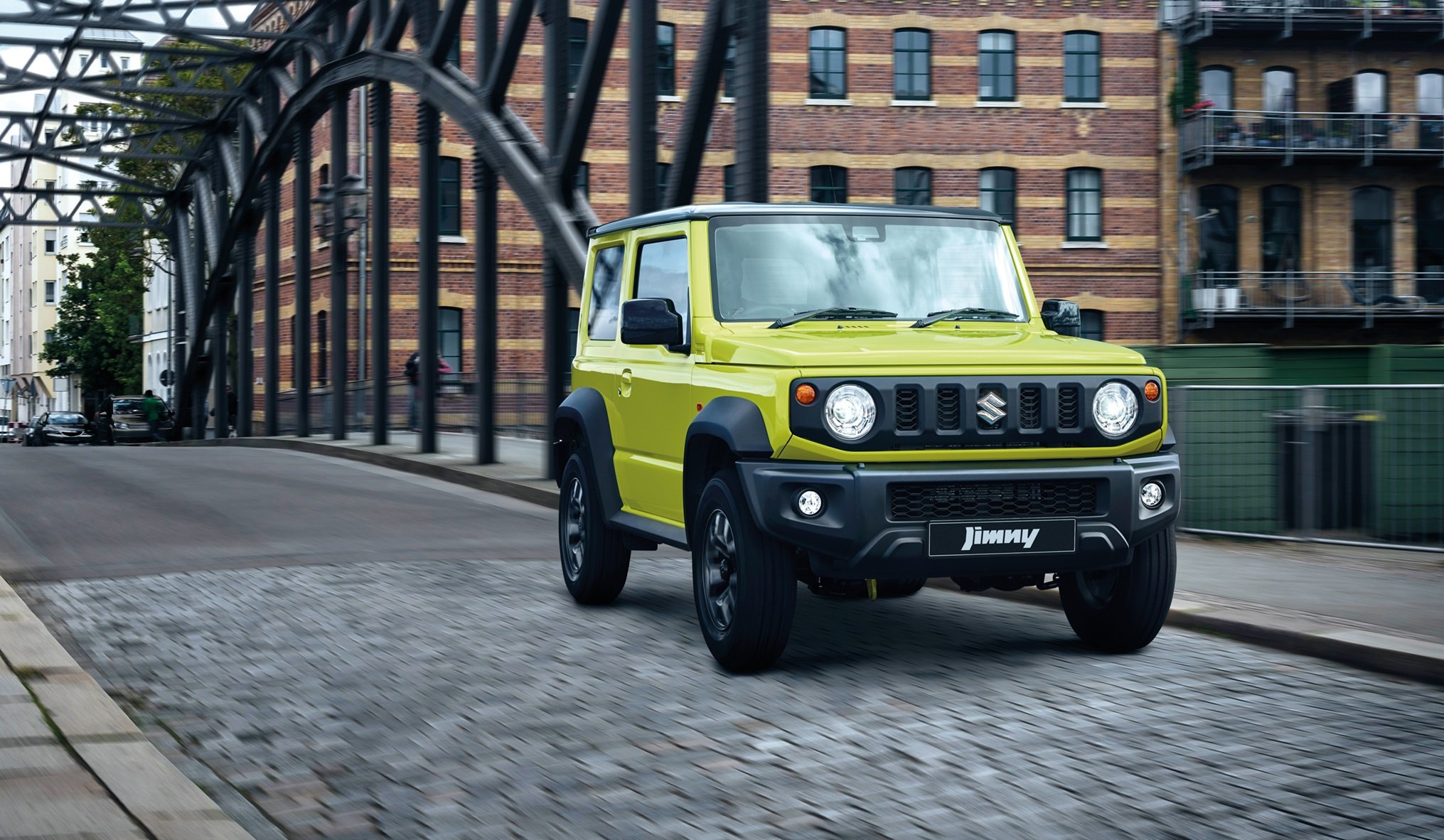
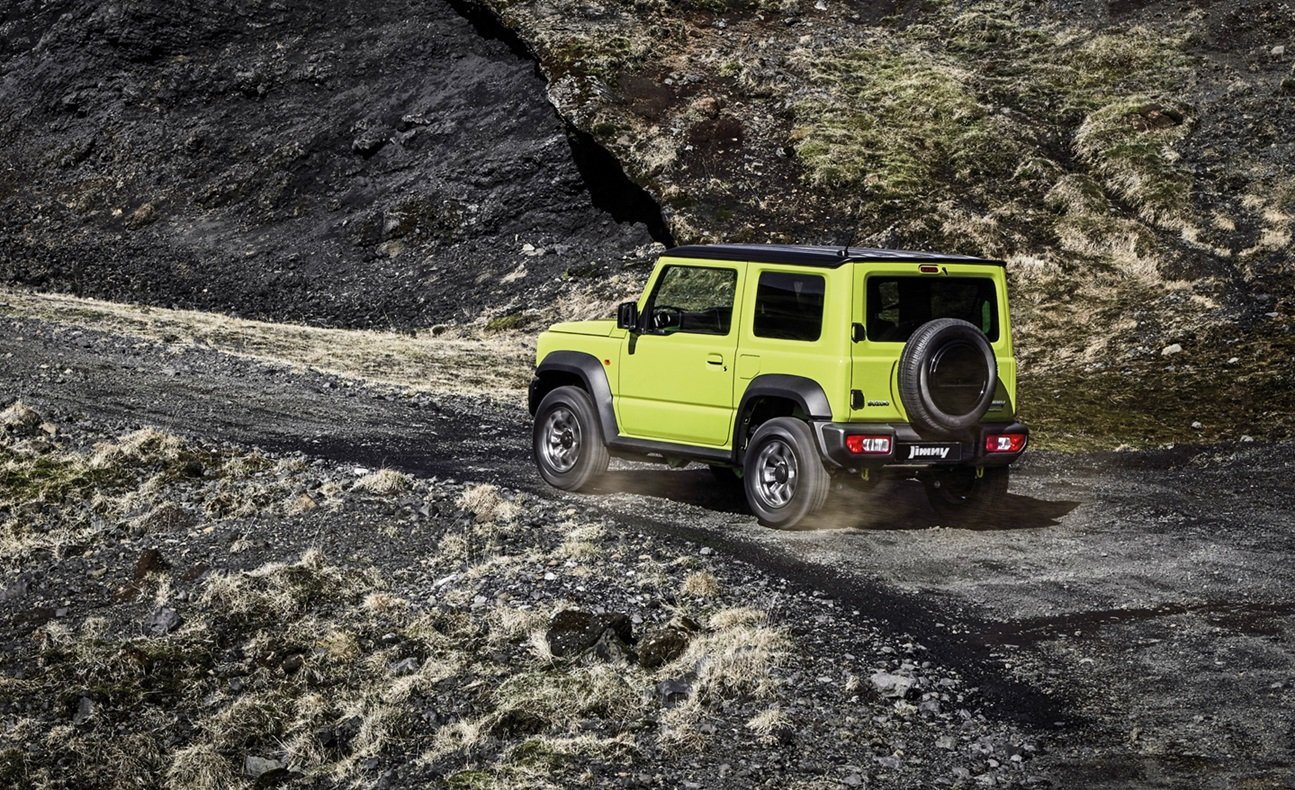
Body roll is pronounced in corners due to the high centre of gravity and the crude suspension configuration. While this is expected given its off-road focus, it doesn’t inspire confidence on winding roads or during sudden manoeuvres.
With the three-door model and its shorter wheelbase, it feels like it turns on a dime as the rear wheels are literally right behind your seat. It’s fun to drive, especially in a beachy setting. The XL does feel a bit more stable due to its extra length, particularly on longer bends.
Take it up a few gears on the open road and you’ll quickly realise this is not where this vehicle belongs. It revs at about 3000rpm just to maintain 100km/h, so it constantly feels like you’re going 1000km/h. Overtaking is not really a good idea unless you’re planning to overtake somebody on a bicycle or a walker, as there isn’t enough grunt or gearing to accommodate that sort of manoeuvre.
Off the road, the Jimny truly comes into its own. The part-time four-wheel-drive system, combined with a low-range transfer case, equips it with serious off-road capability. The approach, break-over, and departure angles (37°, 28°, and 49° respectively) in the three-door are exceptional, so it has no trouble at all tackling steep inclines and sudden dips or logs.
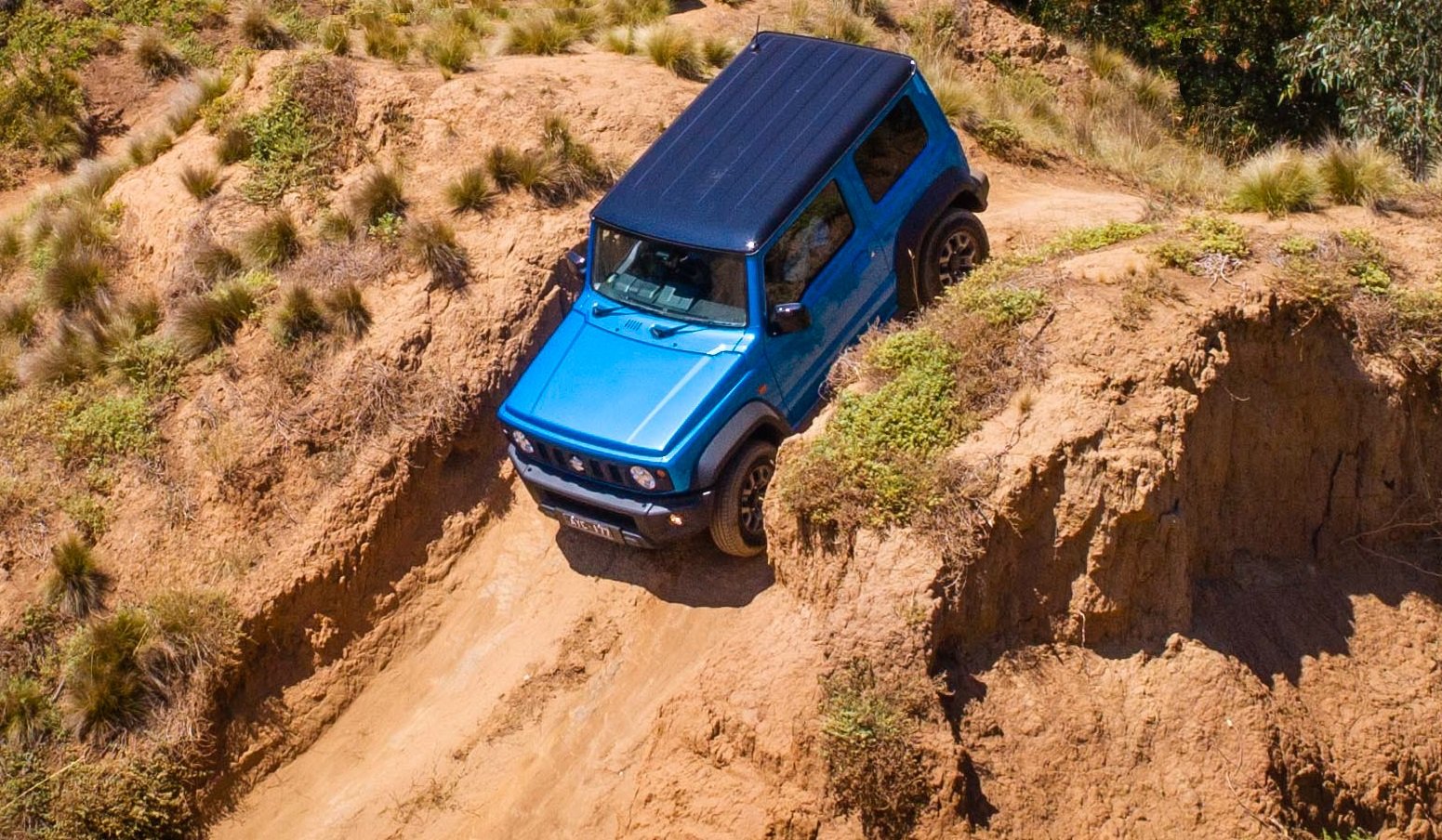
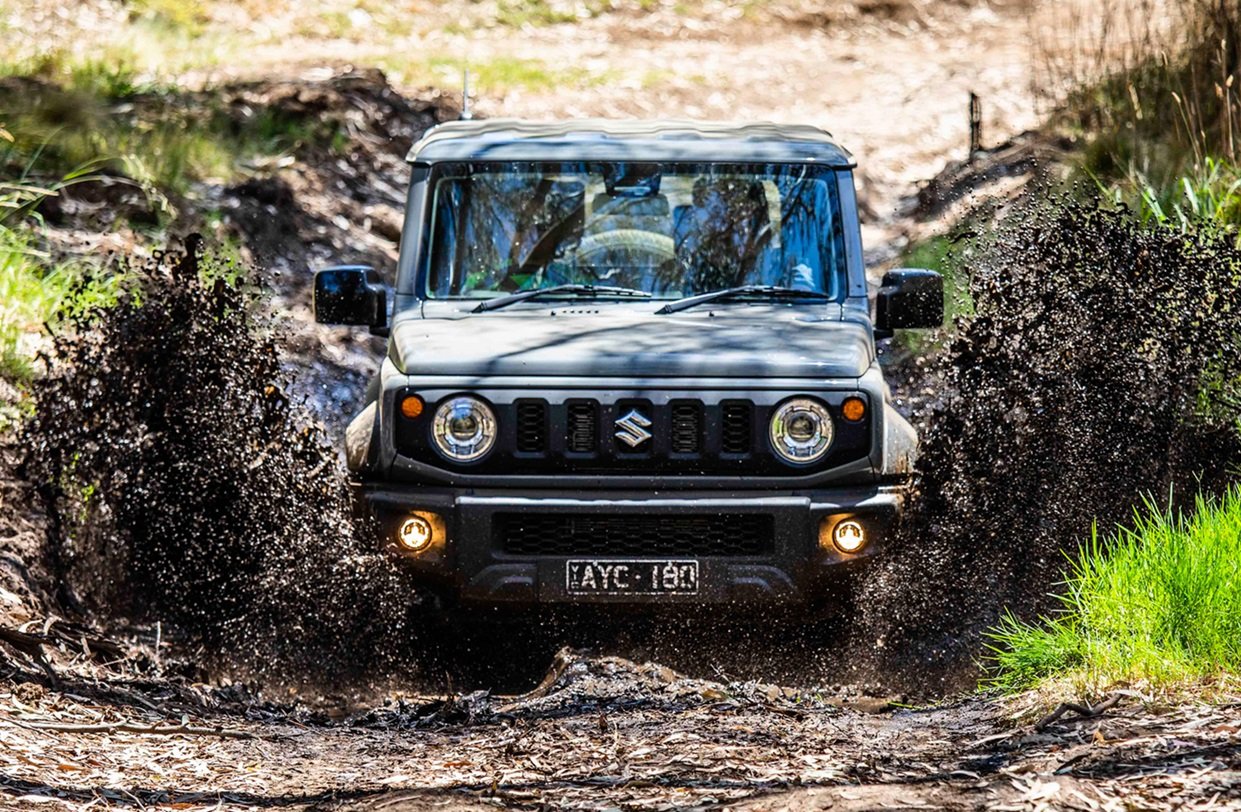
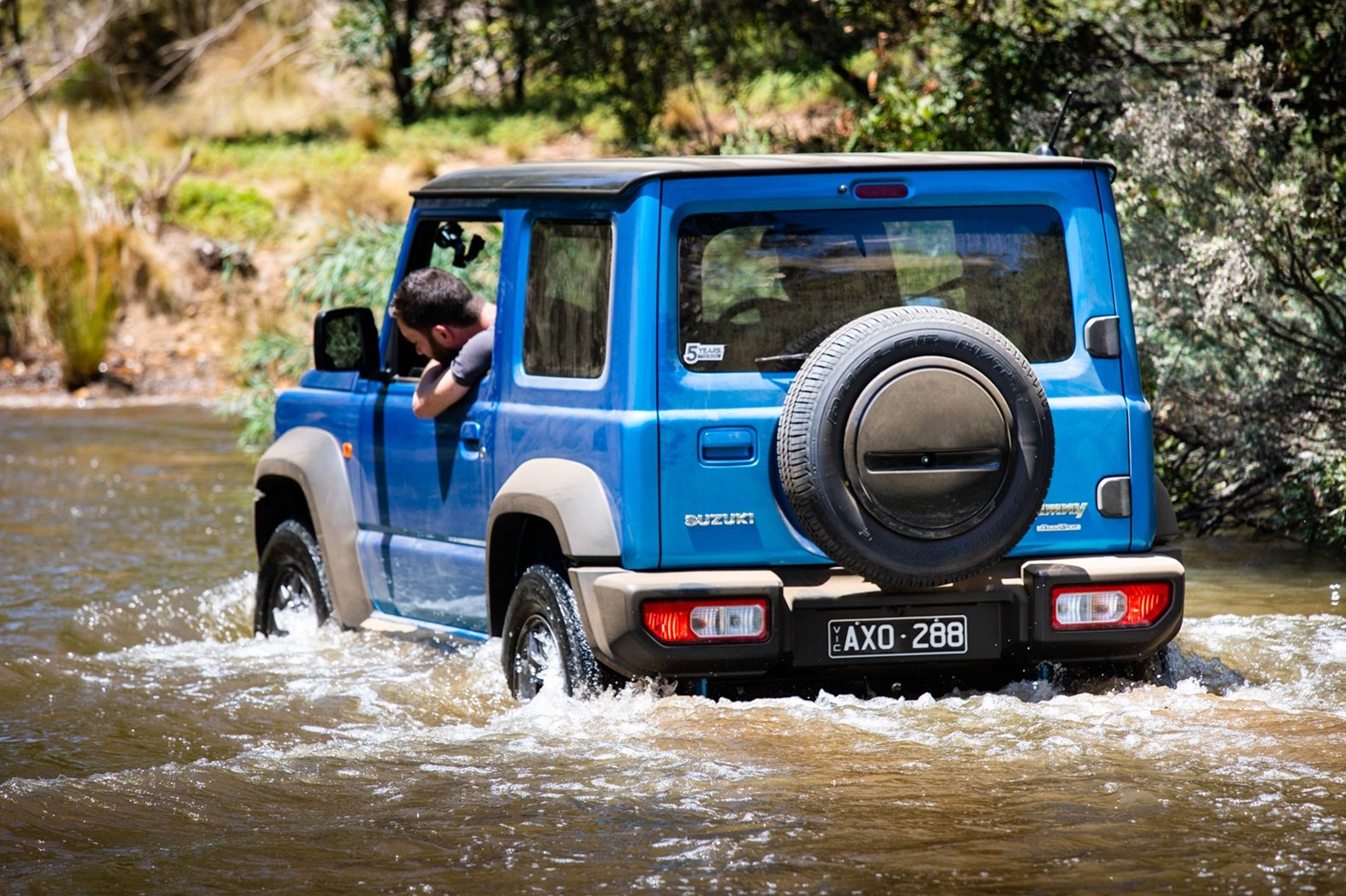
The ground clearance is 210mm in both the three-door and five-door, but the five-door does have reduced potential due to a shallower break-over of 24 degrees. It shares the same narrow track though so it does offer pretty much the same plucky go-anywhere attitude.
Traction is commendable despite wearing 195/80 highway terrain tyres, and the electronic stability program includes an off-road tune to try and force engine torque to the wheels with the most grip.
The lightweight layout proves advantageous here, as the Jimny can scramble up loose surfaces where heavier vehicles might struggle and bog. It’s obvious that Suzuki has engineered this vehicle with off-road enthusiasts in mind, and in the wild, it feels unstoppable.
I'll help you save thousands on a Suzuki Jimny
Just fill in this form.
No more car dealership rip-offs.
Greater transparency.
Less stress.
ENGINE
All five versions are powered by an eager and rev-happy 1.5-litre naturally aspirated four-cylinder petrol engine, producing a puny 75kW and 130Nm. It is one of the least powerful options in its class, but the Jimny is not very heavy, so the power-to-weight ratio is… actually it’s not very good either. The three-door manual weighs just under 1100kg and the XL weighs 1177kg (tare).
What is good is the fuel consumption. The manual three-door is rated at 6.4L/100km and the auto at 6.9L/100km, while the XL five-door is exactly the same, despite weighing around 82kg more than the equivalent three-door version.
One of the great things about the Jimny is its simplicity, which is extremely important if you’re planning huge trips around the country, including into the remote areas. This engine isn’t turbocharged and does without direct injection. It can also run on 91 RON fuel. The 40L tank provides a theoretical average range of 625km in the three-door manual.
TRANSMISSION
Like the engine, there’s nothing complex to be found here. Either a five-speed manual or four-speed auto. The manual requires a traditionally long throw from its tall shifter stick, but the clutch pedal is light and easy to modulate, even in dense traffic.
Going for the auto makes things easier in busy conditions, and it requires similar revs to maintain highway speed. However, with fewer ratios, the engine’s torque isn’t split up into as many segments as the manual, meaning, it is slower and more tiresome during overtaking. The final drive ratio is 4.09:1 in the manual and 4.3:1 in the auto. The auto’s fourth gear is an overdrive, at 0.697:2 compared with the manual’s fifth gear straight through 1:1 ratio.
TOWING
In terms of hauling anything with a Jimny, you’re severely restricted to just 1300kg of maximum braked towing capacity. That’s worse than some small SUVs. Unbraked, you’ll get a base 6X4 trailer weighing 255kg on the back and you wouldn’t be able to put more than a few big bags of spuds in there - maybe two bags of concrete - for a maximum of 300kg.
The GVM is restricted to just 154k5g in the top-spec 5-door auto, so it’s either a pathetically small towing assignment, or a measly 345kg payload. You cannot do both.
FUNCTIONALITY
It might be small but the packaging is very efficient, as per tradition with Suzuki vehicles. The boxy shape also opens up cabin space and the perception of space so it feels open inside. There’s a sense of freedom to move about. Headroom is not going to be an issue for most people, but legroom in the back in the three-door is tight.
What’s missing though is a proper centre console and adequate storage. It’s often a case of, ‘chuck your things on the floor’ every time you get in. Luckily, the floor is pretty small so it’s not hard to find your stuff when you arrive.
Two cup holders are featured in what looks like the remains of a damaged centre console, but they are just as accessible for the rear passengers. Thin pockets in the doors and a small tray in the lower dash is pretty much the extent of the storage. And a glove box.
A tiny 85L boot is all you get in the three-door. But it does expand to 377L with the rear seats folded. And the seat-backs include a hard-wearing plastic coating in the three-door. If you need more space, the XL swallows up 211L worth of stuff, expanding to 1113L.
Suzuki has given the XL an updated touch-screen, now measuring 9.0 inches instead of the 7.0-inch unit in the three-door (except the Lite, it has no touch-screen). This newer screen includes improved graphics and menu capability, while the older 7.0-inch setup is basic but slightly more user-friendly as a result. The bigger screen offers Android Auto and Apple CarPlay, unlike the smaller unit. And the XL gets a four-speaker sound system over the twin setup in the three-door.
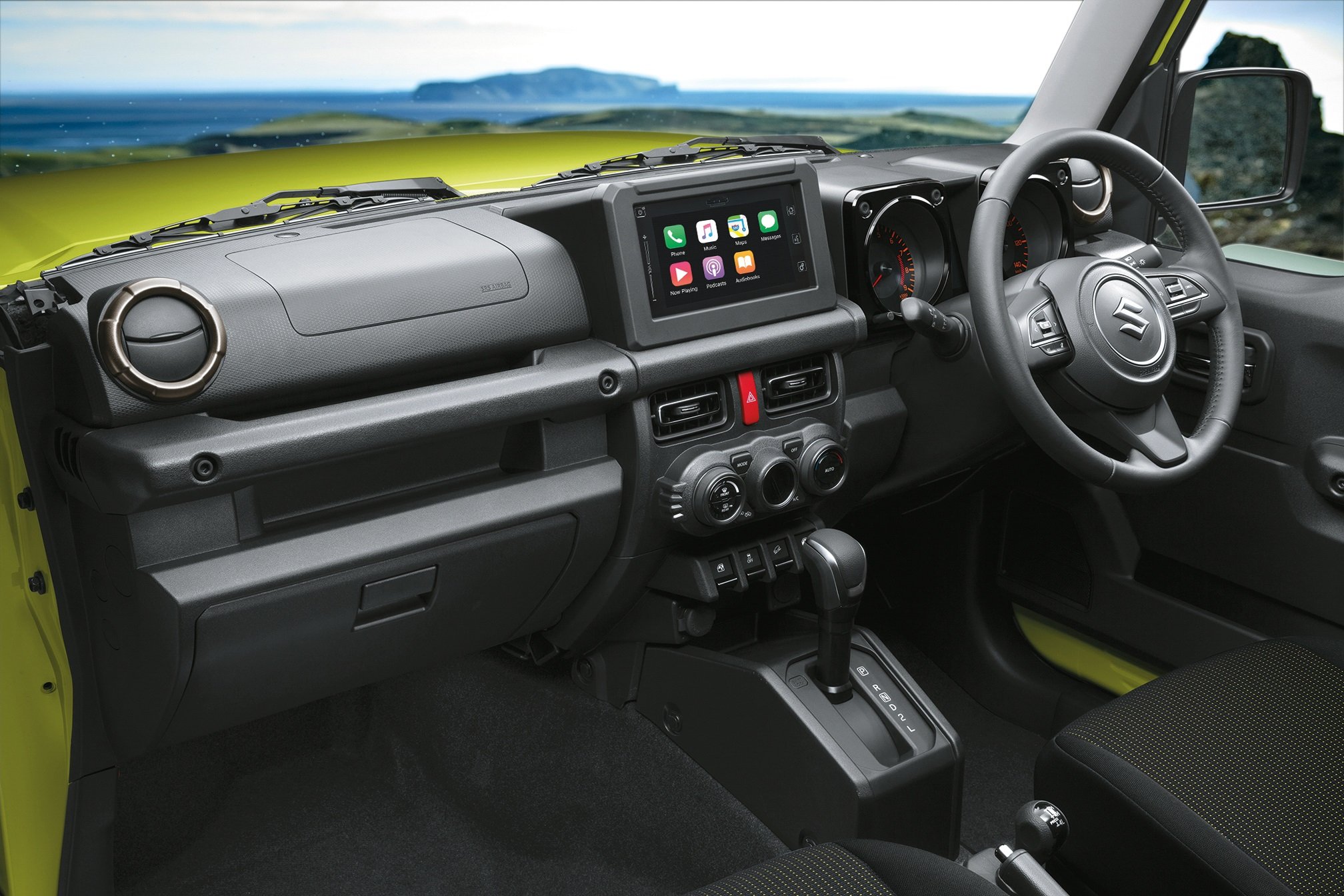
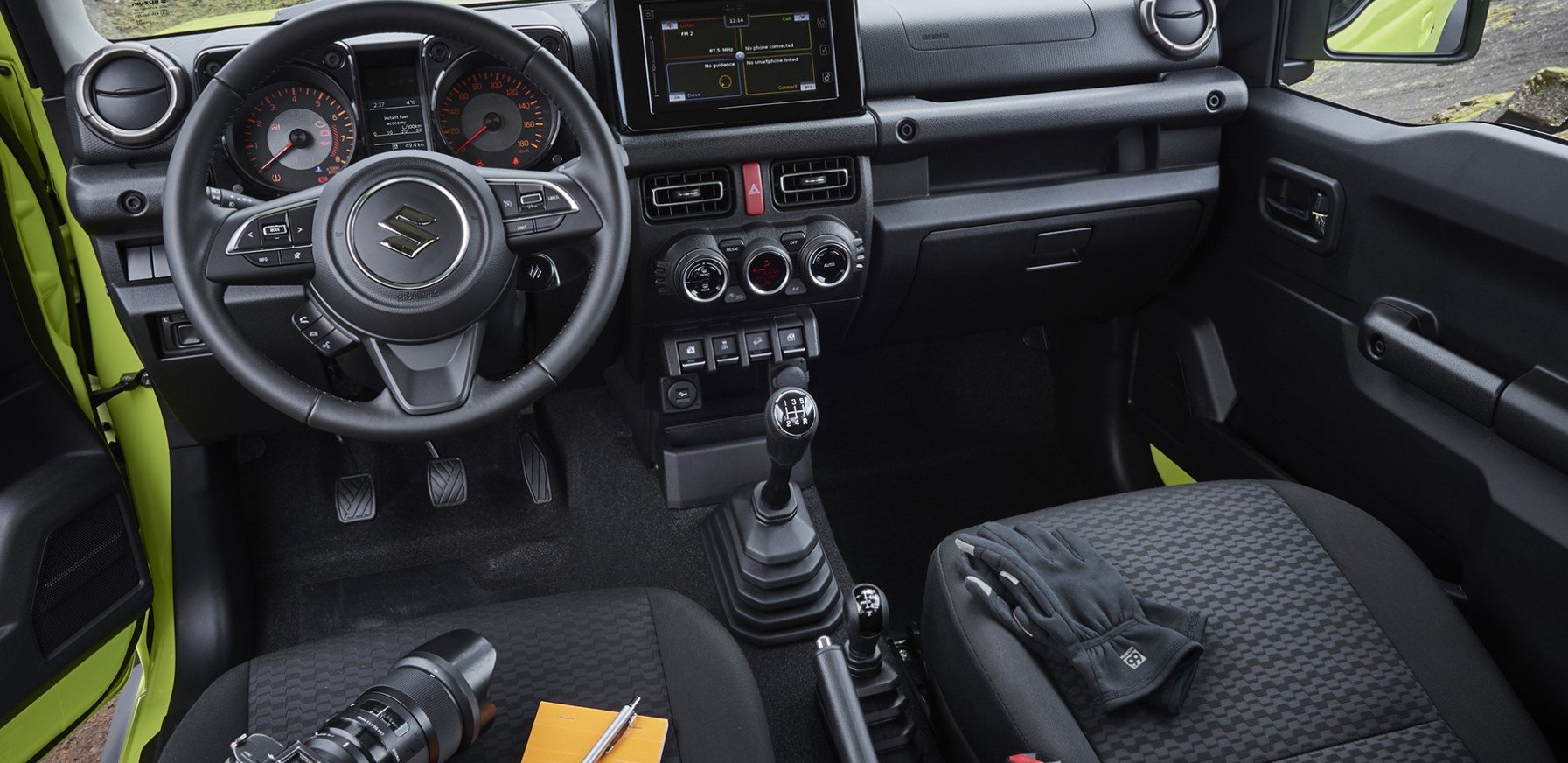
Those grab-handle screws you see in the picture above? They’re fake.
There isn’t much in terms of creature comforts or luxuries. Steering wheel buttons, a 12V socket in the front (and in the boot in the XL), climate control for all but the Lite (standard air-con), and cruise control is about the gist of it.
It does come with plenty of safety systems, such as lane departure warning, autonomous emergency braking and six airbags, as well as child seat anchor points, hill descent control, and of course stability and traction control. The current ANCAP score is three stars, last tested in 2019.
DRAWBACKS
Its slow and weak acceleration can be frustrating on busy highways, as you always end up at the back of the pack unless you trash it and whip the gearbox regularly.
Similarly, the flimsy handling feel is not ideal on open country roads as it does wander in its lane and can feel disconcerting on big sweeping bends, especially the three-door model.
Boot space and cabin storage is very limited. But the introduction of the XL five-door is a good step. It’s a handier alternative and offers a broader range of abilities. Even so, the cabin remains sparse, albeit characterful and entertaining by design.
MAIN COMPETITORS
The nearest rival would have to be the Jeep Wrangler, GWM Tank 300, and any other heavy-duty off-road SUV, as well as most 4x4 utes in that respect. In other words, the Jimny does not have a direct rival in its class that’s built on a proper chassis, offering dual-range four-wheel drive.
There are not many new vehicles on the market that still use a live axle configuration for the front and back, full stop. So if you do want this layout and you wish to pay the smallest sum possible right now, the Jimny is categorically the vehicle for you.
CONCLUSION
The Suzuki Jimny is a charming and capable off-roader that brings a unique proposition to the market. For urban dwellers and highway commuters, the compromises in ride and dynamics, and power may be significant deterrents. However, for those who seek adventure and value off-road capability above all else, the Jimny remains an endearing and competent companion.
It’s a vehicle that excels in its niche but demands patience and understanding in everyday use.




